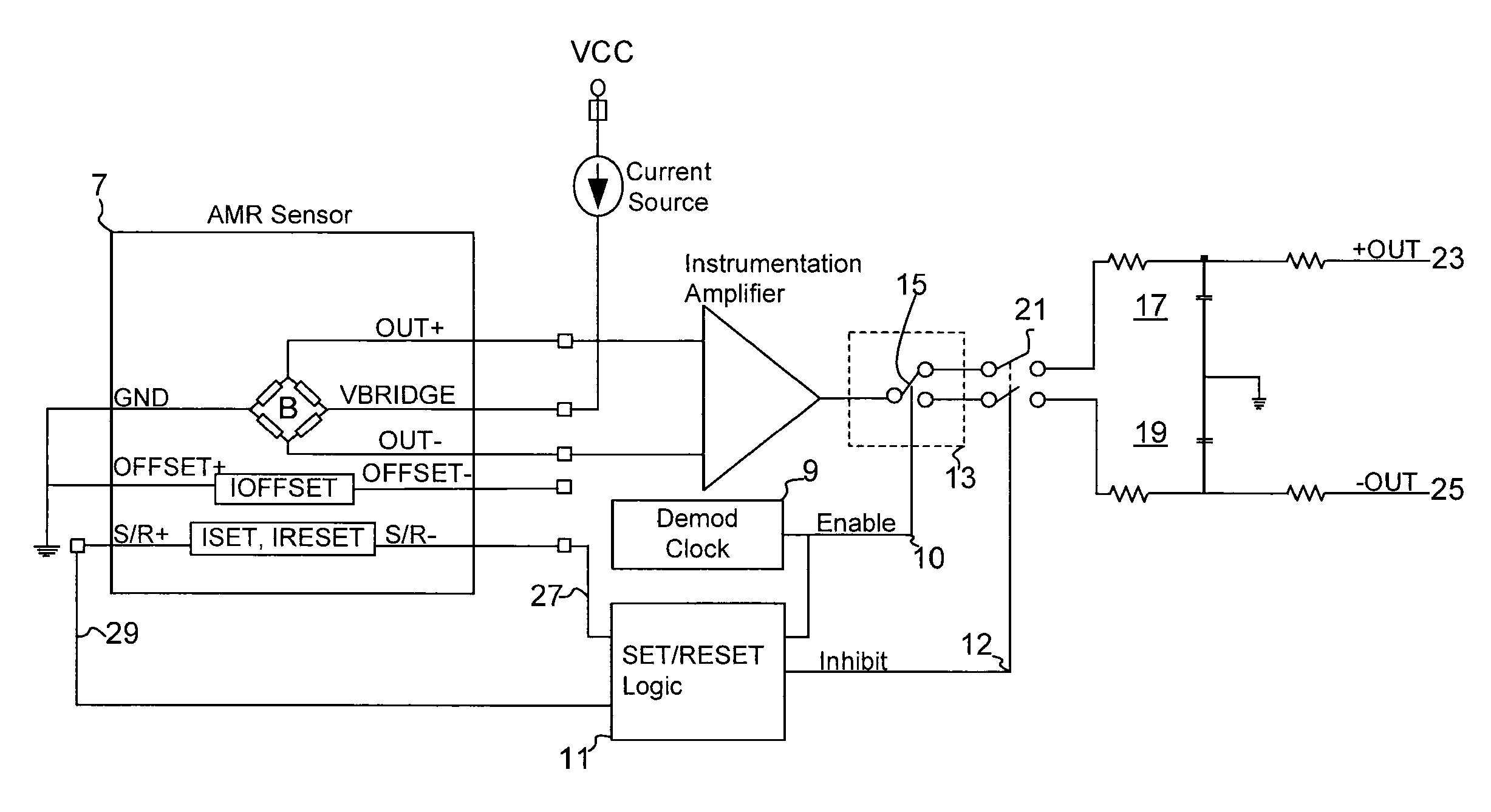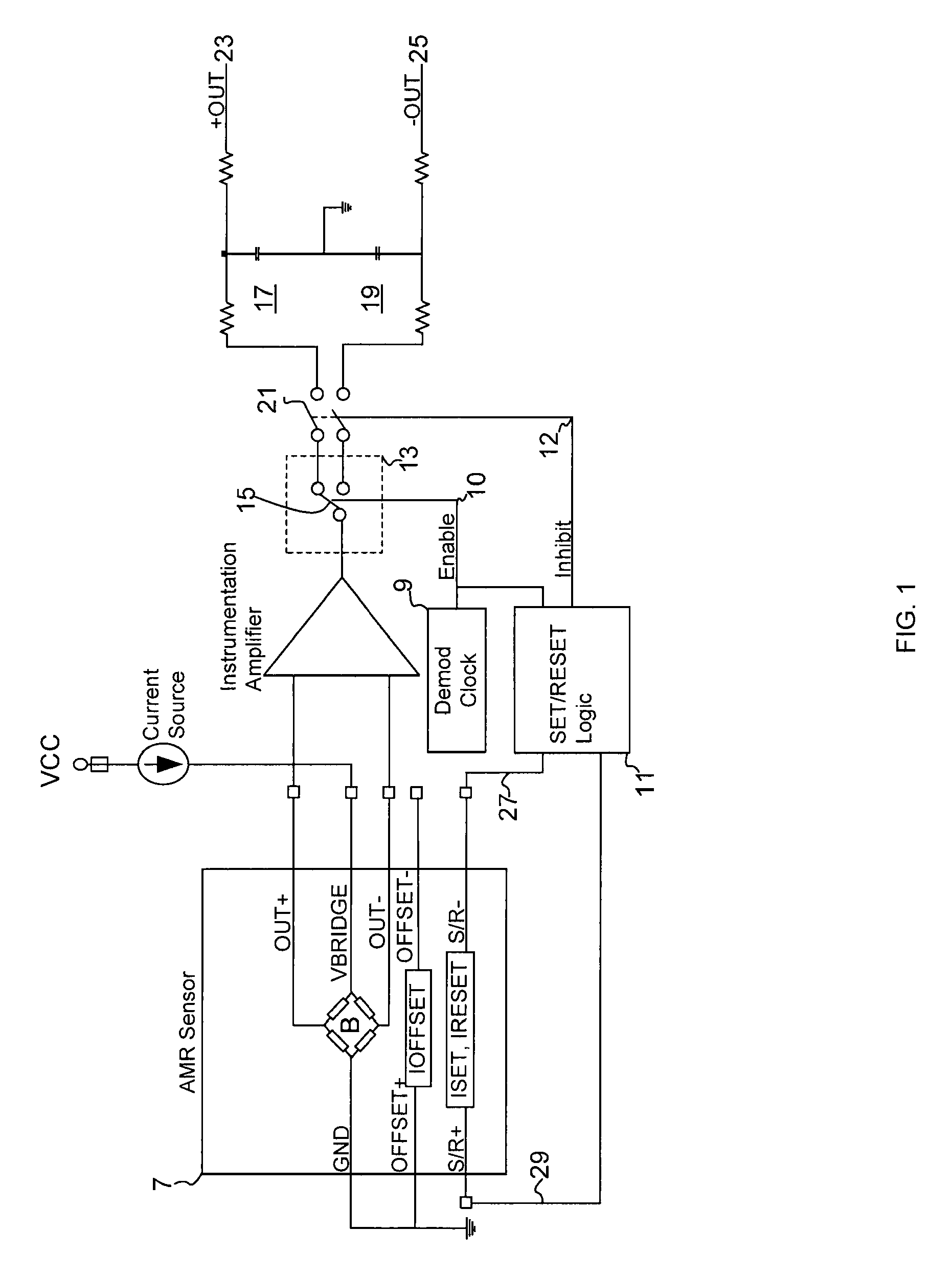Correcting offset in magneto-resistive devices
a technology of offset correction and magnetic resistance, applied in the field of anisotropic magnetoresistive sensors, can solve the problems of inability to accurately detect the current value, the circuit to be physically larger and operationally slower, and the sensor type has an inherent offset bias voltage, etc., to facilitate the use of amr sensors, reduce manufacturing costs, and operate less power
- Summary
- Abstract
- Description
- Claims
- Application Information
AI Technical Summary
Benefits of technology
Problems solved by technology
Method used
Image
Examples
Embodiment Construction
[0015]Referring now to the block diagram in FIG. 1, there is shown a block schematic diagram of one embodiment of the present invention including a commutating demodulator. The demodulator clock drives the set and reset circuits 11 as well as a flip-flop circuit 13 that controls the commutating switch 15. The output of the switch 15 supplies two integrators 17, 19 that derive the differential signal. An inhibit switch 21 turns off the output signal from circuit 13 when the SET / RESET signal is present to eliminate this signal passing through to the outputs 23, 25.
[0016]This embodiment of the present invention allows direct measurements to be made from the sensor 7 in contrast to conventional schemes that require several intermediate measurements to be made to calculate sensor offset in order to correct the sensor output. In this embodiment, the sensor offset is removed by the commutating demodulator circuit of FIG. 1 that produces the sensor output as the differential signal 23, 25 a...
PUM
 Login to View More
Login to View More Abstract
Description
Claims
Application Information
 Login to View More
Login to View More - R&D
- Intellectual Property
- Life Sciences
- Materials
- Tech Scout
- Unparalleled Data Quality
- Higher Quality Content
- 60% Fewer Hallucinations
Browse by: Latest US Patents, China's latest patents, Technical Efficacy Thesaurus, Application Domain, Technology Topic, Popular Technical Reports.
© 2025 PatSnap. All rights reserved.Legal|Privacy policy|Modern Slavery Act Transparency Statement|Sitemap|About US| Contact US: help@patsnap.com



